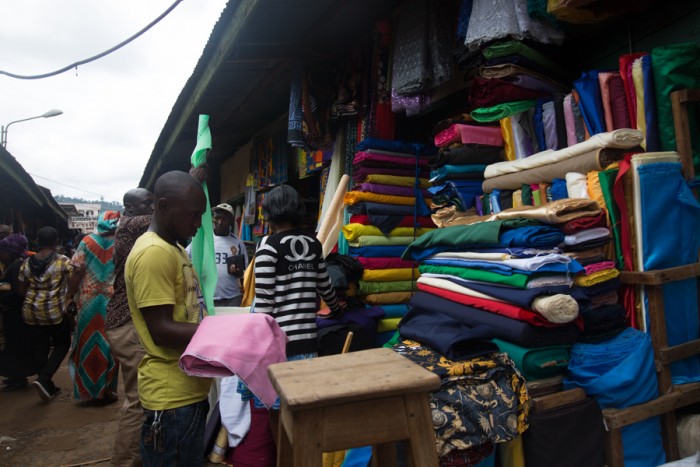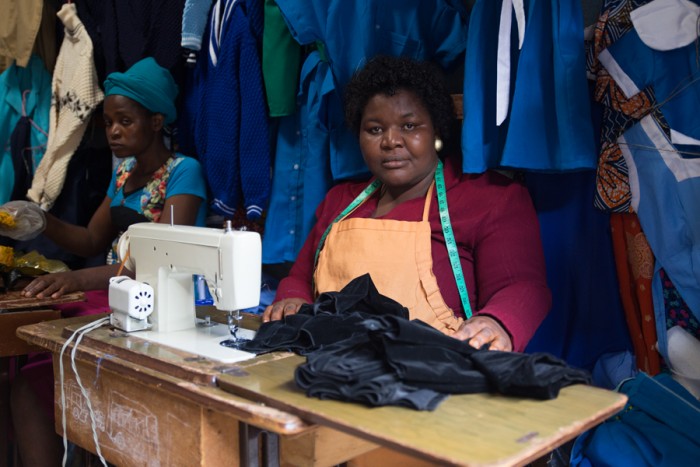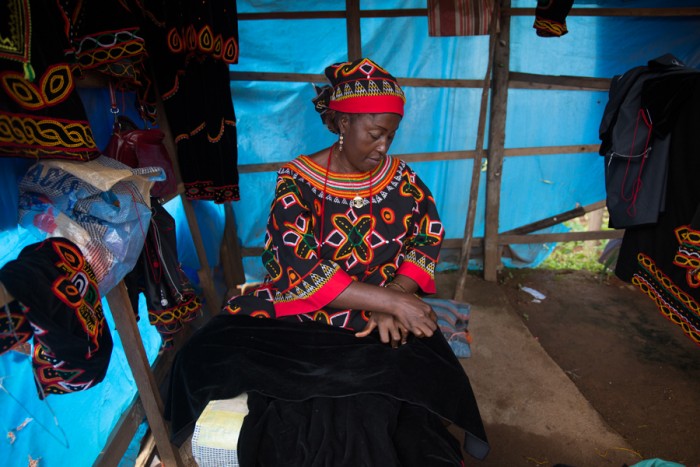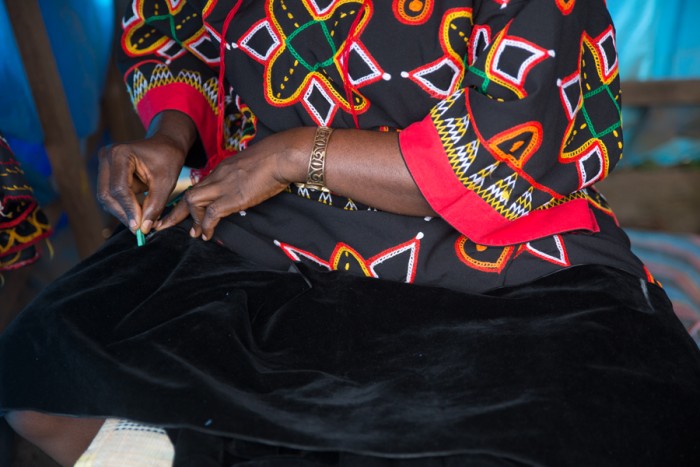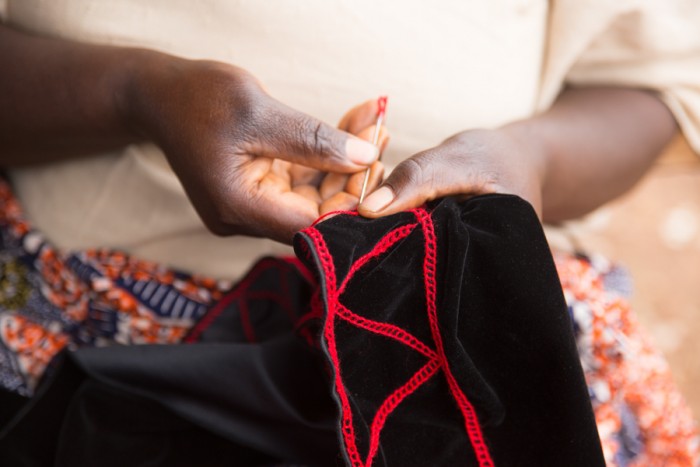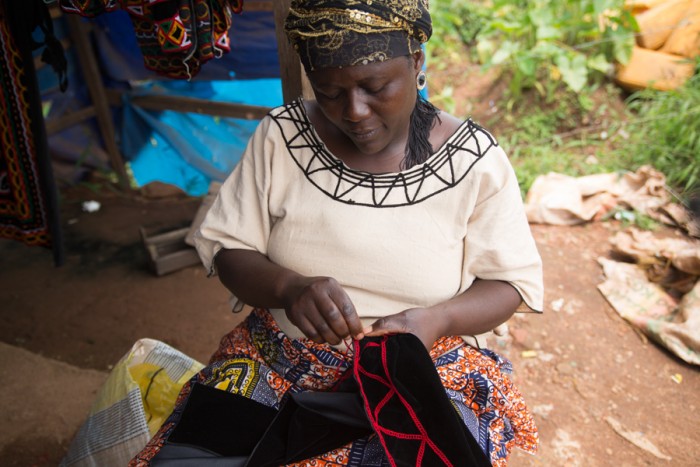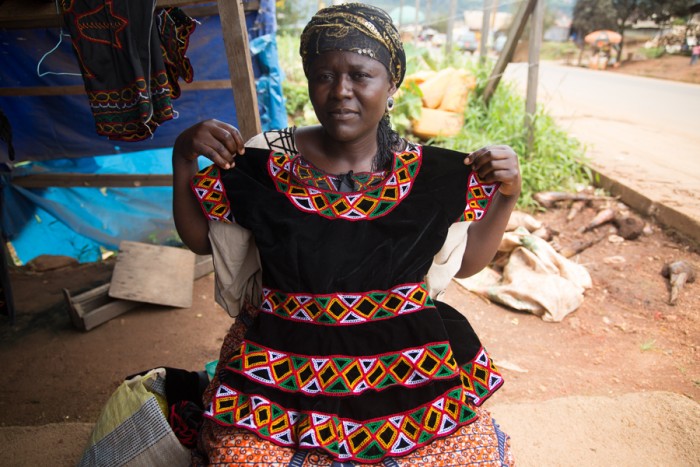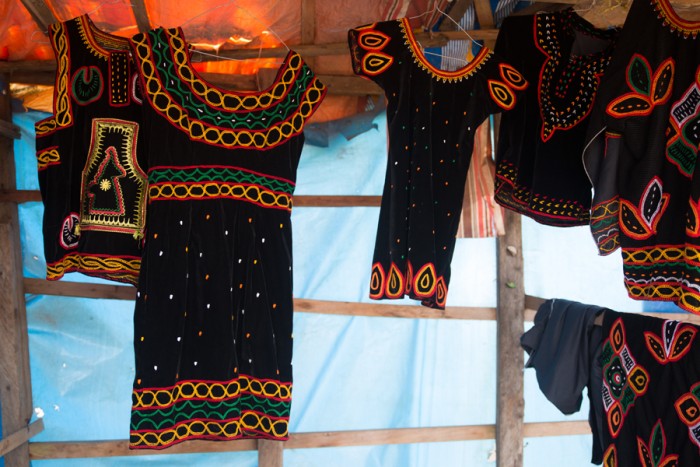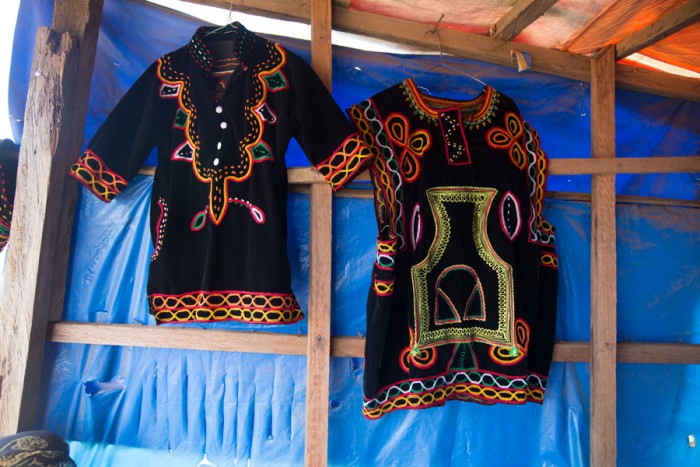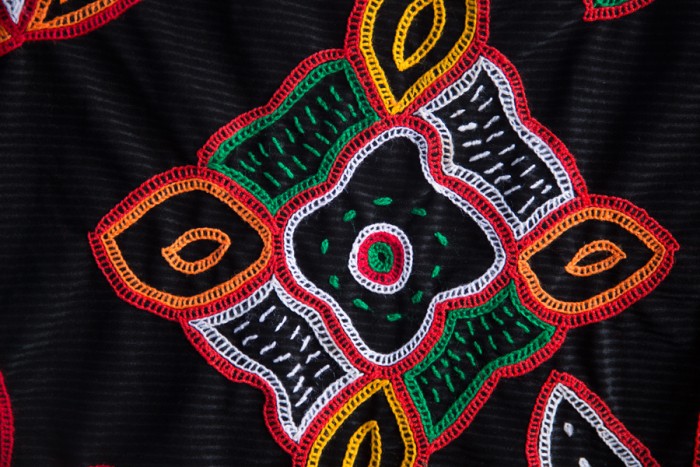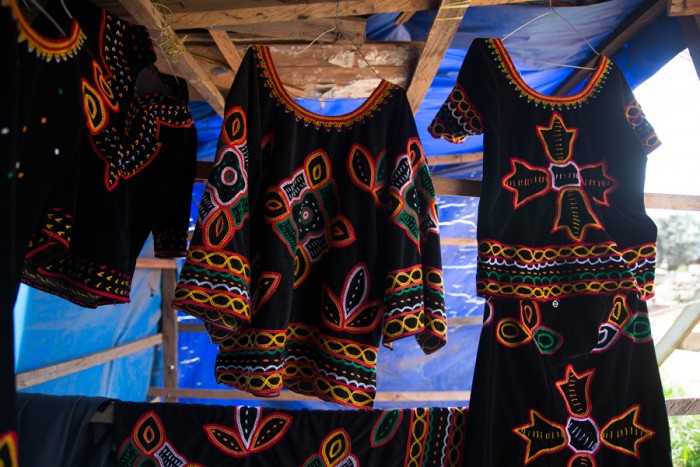October 17th, 2016 by Rachel | Tags: Peace Corprs | No Comments »
When I watched part of the Olympics opening ceremony in Rio, I was moved to see that the Cameroonians were wearing outfits that were specific from the region, Northwest, where I have called my home for two years in Cameroon. When I was having my traditional Northwest wear made, I interviewed two embroiders who explained the history and culture of wearing the traditional Northwest wear, Marcelline Foncham and Lilian Fri Befu.
Before I share the interview, I would like to explain the process of making it, which is a long and team effort process.
The first step is to go to a fabric shop to purchase a black fabric. There are a variety of types of black fabric but the most commonly used type of black fabric for Northwest traditional wear is velvet.
Then you have to request a certain number of meters you need and it’s based on what you want to make and your size. Because I wanted a full outfit that included a shirt and skirt, and I am of a small size, I requested 2.5 meters.
I then took the black fabric to the tailor who then cut out the pieces and stitched the pieces together into a shirt and skirt. I had to wait for a week for the tailor to put the shirt and skirt together.
Once the tailor completed creating a shirt and skirt, I took them to embroiders. We can choose any design we would like. We can find sample designs by googling “Traditional Bamenda Wear.” I found the design I liked the best through a Cameroonian friend who found the picture on Facebook and showed it to me. We can also certainly sketch the design too, but embroiders often prefer actual pictures so that they can see how the design should exactly look.
The embroiders then sketch out the pattern with a chalk on the fabric.
The embroiders then embroider directly onto the clothing. The most commonly used colors are red, green, yellow and white, which are the colors of Cameroon. Any colors can be used as one wishes. The process of embroidering an outfit can take about two weeks.
The work is very labor intensive as all the work is truly done by hand. No sewing machine is involved in the embroidering process.
This is the finished result of my shirt, which came out very beautiful.
These are examples of other finished traditional Northwest clothing.
Here is my interview with two embroiders who worked on my traditional Northwest wear.
Why did you decide to do embroidery?
Lilian: I like it.
Marcelline: I learned it from my mother. The dress gives me employment.
Did you receive training?
Lilian: Yes.
Marcelline: I received training from my mother.
How long was the training? Where did you do training?
Lilian: One year. In Bamenda. At food market from an embroider.
Marcelline: I grew up learning it from my mother. My father was a police officer. I grew up moving from one place to another. My family is from Bali-Nyounga.
What is the story behind Bamenda traditional dresses of Northwest?
Marcelline: We are from the grass hills. All of Northwest is grass hills. It’s the dress of the grass people. This dress can only be found in Cameroon. It’s a tradition that has been passed down from our parents and grandparents and generation to generation. It’s something we inherited from our parents. It has been around for more than 100 years. My children are learning embroidery in school.
Who came up with the design idea?
Marcelline: It was the grandparents. When I was born, my grandparents were embroiders. The traditional colors come from Cameroon flag but we use many different colors.
Why do they exist?
Marcelline: It’s our traditional wear. It identifies us. If I go to America wearing the dress, people know I am from Cameroon. It has physical attract to the tourists.
When are they worn?
Marcelline: During our annual festivals and marriages. Dresses have been modified. They were just tops. We now have skirts and gowns. We have trousers.
